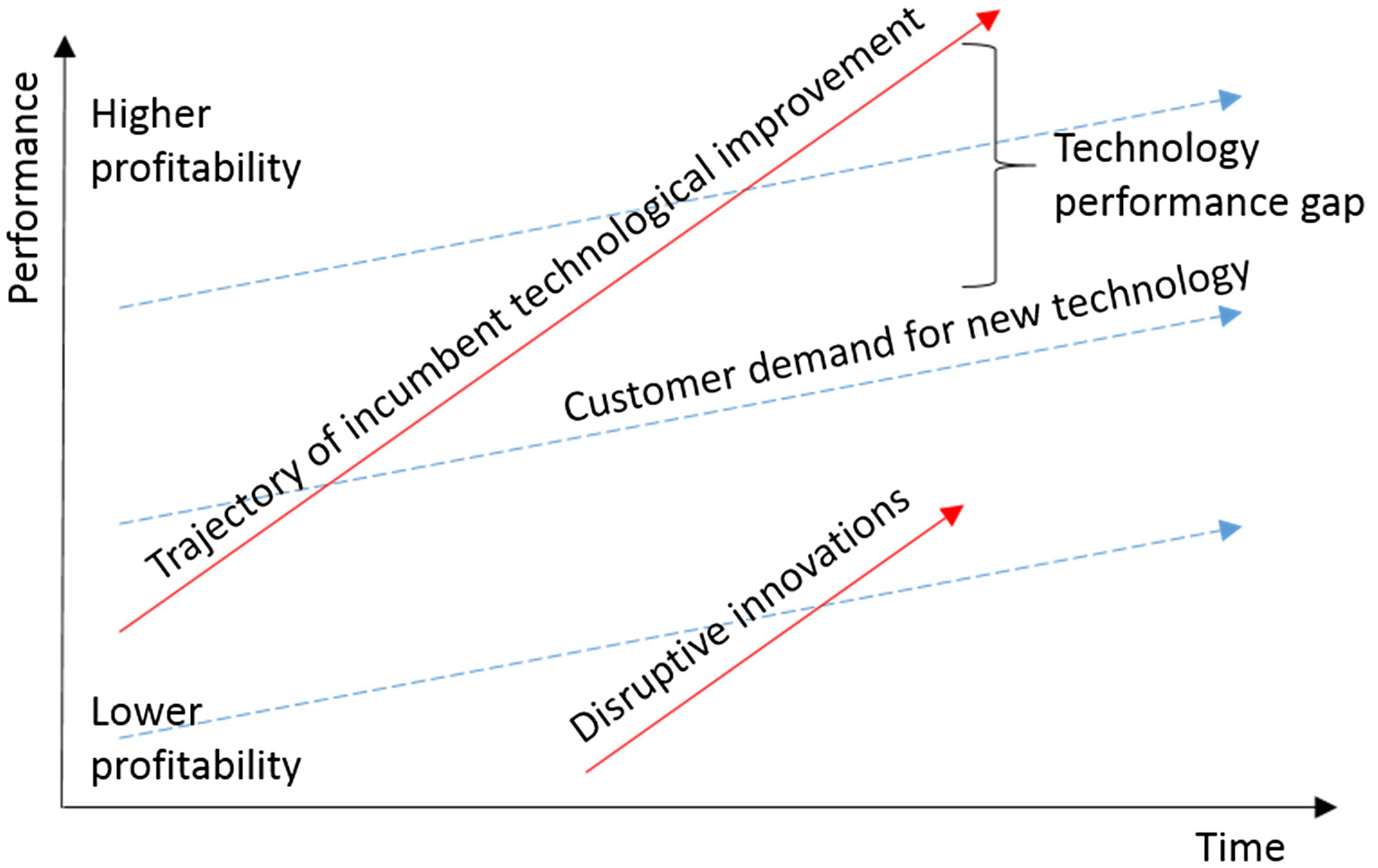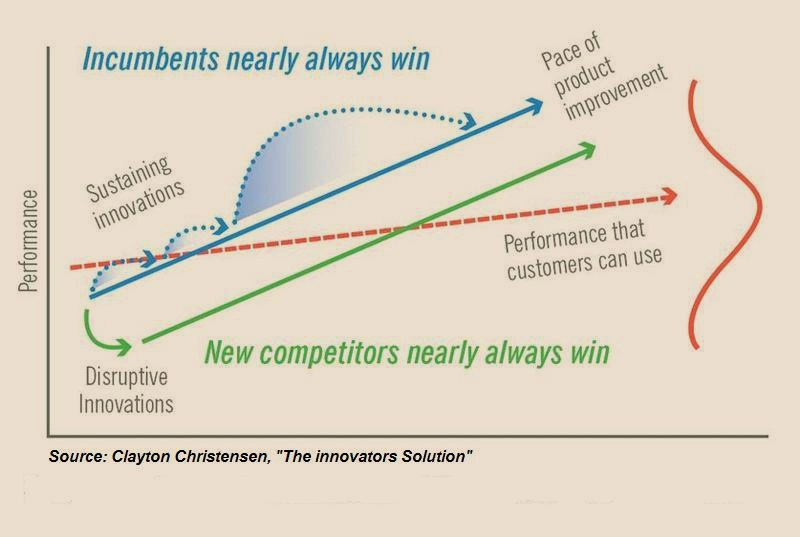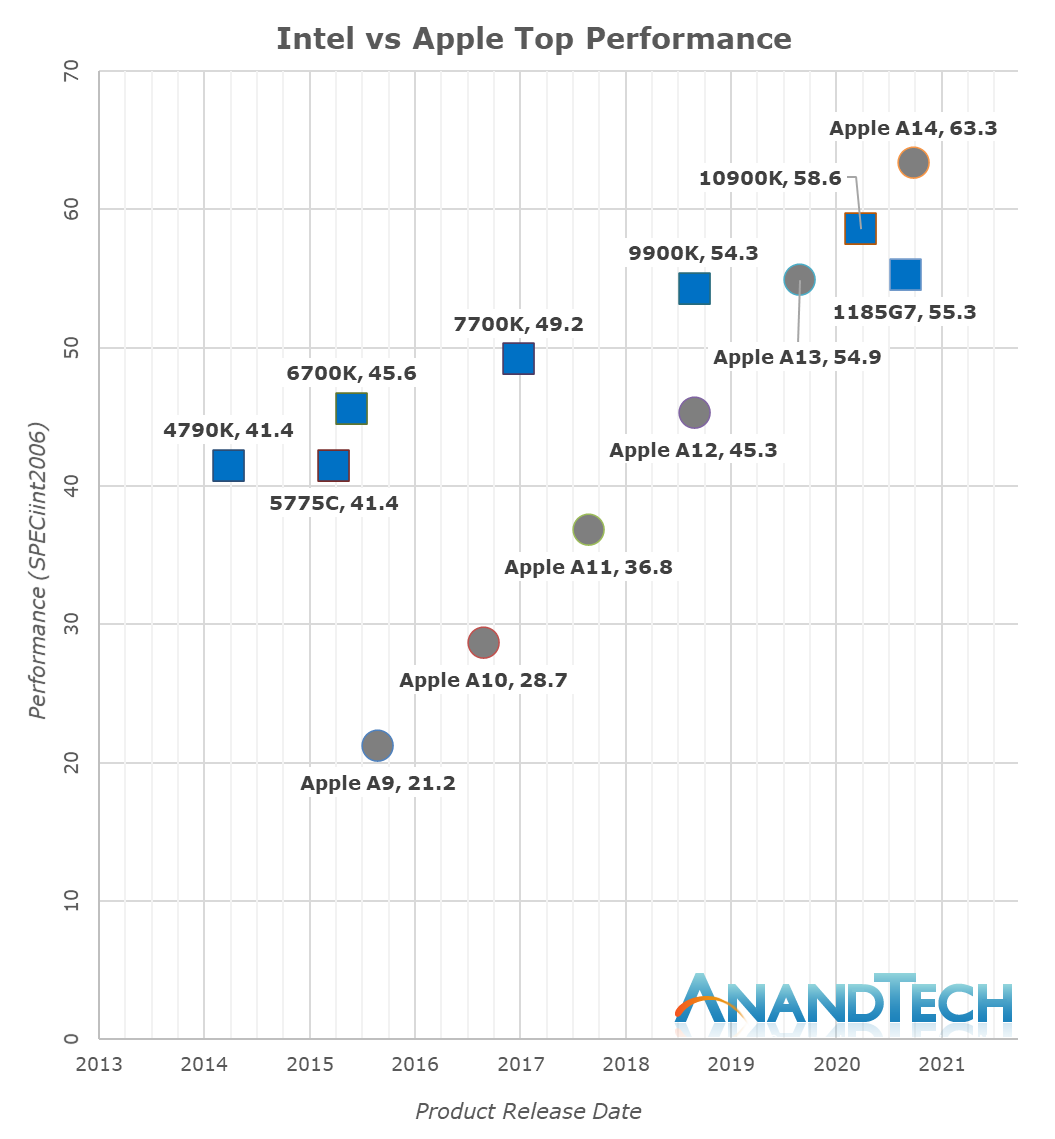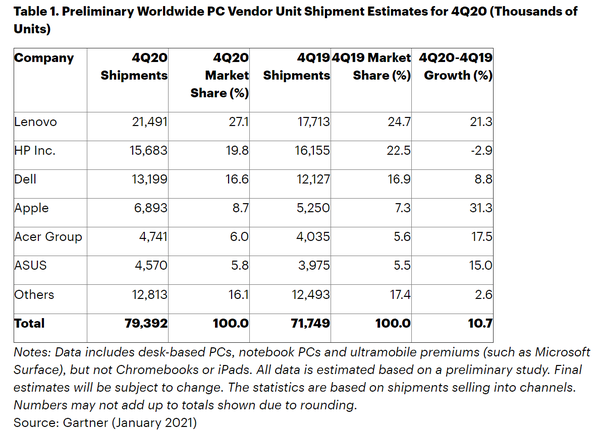Apple’s microprocessors bear out Christensen’s framework

GRAPHICS ABOVE AND BELOW:
Christensen’s original disruptive innovation framework

20 October 2021 (Athens, Greece) – Clayton Christensen’s disruptive innovation framework explains how new entrants to a market start by entering less profitable segments. Incumbents rarely respond well to such low-cost market entry, preferring to stick to their profitable markets. Over time, though, innovation on the cheaper platform, which often uses different technical approaches, accelerates and overtakes existing offerings. Christensen’s framework first appeared in 1995.

Apple’s microprocessors seem to have done just this against Intel. The chart above plots the consistent performance gains in its A-series of mobile processors against Intel’s desktop chips. You’ll note the uncanny resemblance to Christensen’s chart. Textbook disruption.
Of course we’ll need to review these data in the light of Apple’s new M1MAX Mac chips announced this week. These pack 57bn transistors and a 10-core CPU and a 57-core GPU. For a great analysis of those chips click here. But this being tech, one must assume Patrick Gelsinger (CEO of Intel) has something up his sleeve and just might still get a piece of the Apple action (see my further comment below).

This leads to Apple’s bigger disruption. PCs are not the future. But, Apple is lapping the field over and over. Seamless integration between hardware and software to challenge PC desktops was not as clear in the past as it will be in the future.
These new chips are not just about feeds and speeds. There’s an entirely different and innovative computing architecture across these devices. And, correct, not everyone needs this complexity and firepower. There might be only 1% of people (of the 400M Mac users) that even need half these things. It will be interesting to see estimates of the sales demographics in a few months and the percentage of buyers primarily using new MBPs for video editing and game or ML development.
But that’s always been the case when new architectures are introduced. This is such an amazing “disruption”, a massive step-function change across the entire stack of software and hardware. It’s a complex story and no, PCs are not (immediately) going away. But this transition has been written about for years in books and papers.
The big point is that across phone, tablet, TV, watch, speaker, laptop, and desktop there’s a platform of capabilities that are unmatched even in one device group, let alone the whole spectrum. It is an unprecedented situation. Apple has developed a whole family of operating systems. These are not just related, but vastly similar enabling a huge ecosystem opportunity. THIS was Microsoft’s vision going back to early 1990s.
I’d be remiss if I didn’t say these are not devices. They can be fiddly. And lack key things. Why no ethernet in the giant power brick like iMac? We see the notch for a camera so why no cellular option? Lots of stuff still to come.
But pay attention to how Apple’s share of regular PCs is growing, keeping in mind they also have growth in phones and tablets and most watches. There is a pretty interesting share change/transition change/disruption going on.

Apple, which already uses its own operating system, has always wanted to take the hardware narrative in its own hands. Not only does a self-designed chip reduce expenses in a more tight-knit ecosystem, it also helps the company better control its product plans and timing. And making laptop processors was the natural next step considering Apple has been building its own chips for iPhones, iPads, and Apple watches since 2010.
What’s more, Apple’s technology already has a leg up on its partner-turned-competitor. The new laptop offers better speed, power, and battery life than its predecessors and Apple has also been able to create a more efficient chip by making more transistors fit in the same space. The new Macs use 5-nanometer transistors, whereas Intel is still shipping chips with 10-nanometer transistors.
While Apple’s evolution from Intel chips to Apple silicon isn’t complete yet – desktop machines like Mac mini, iMac, and Mac Pro, all still have Intel processors – Apple CEO Tim Cook wants to change that by next year.
It’s not exactly a surprise:
• Intel and Apple hook up in 2006 for processors
• Rumors swirl around how long the couple will last
• A 2019 truce between Apple and Qualcomm entangles things
• Apple ends its 15-year fling with Intel in 2021…
• And Intel says it will “fight hard to win” Apple back. But that’s just somebody not accepting they’re divorced.
But with the number of Intel Macs left in Apple’s lineup fizzling, the production of Apple’s own chips may be one area where Intel could still win over the Silicon Valley behemoth.
In July, Intel kickstarted foundry services – chip manufacturing services for third-party players – with big name clients Qualcomm and Amazon. With the announcement, it stepped into the territory of companies like Taiwan Semiconductor Manufacturing Company (TSMC) and South Korea’s Samsung. Intel wants to provide a US- and Europe-based alternative for chip manufacturing, and it’s investing $20 billionon two Arizona plants.
Apple, which currently only partners with TSMC, could use Intel’s chip-manufacturing facilities. It would help the company diversify its supply chain and possibly save some money since TSMC is looking to raise prices by 10% to 20%.
But then, Intel will have to win Apple’s business, and given their recent history, that’s no guarantee.